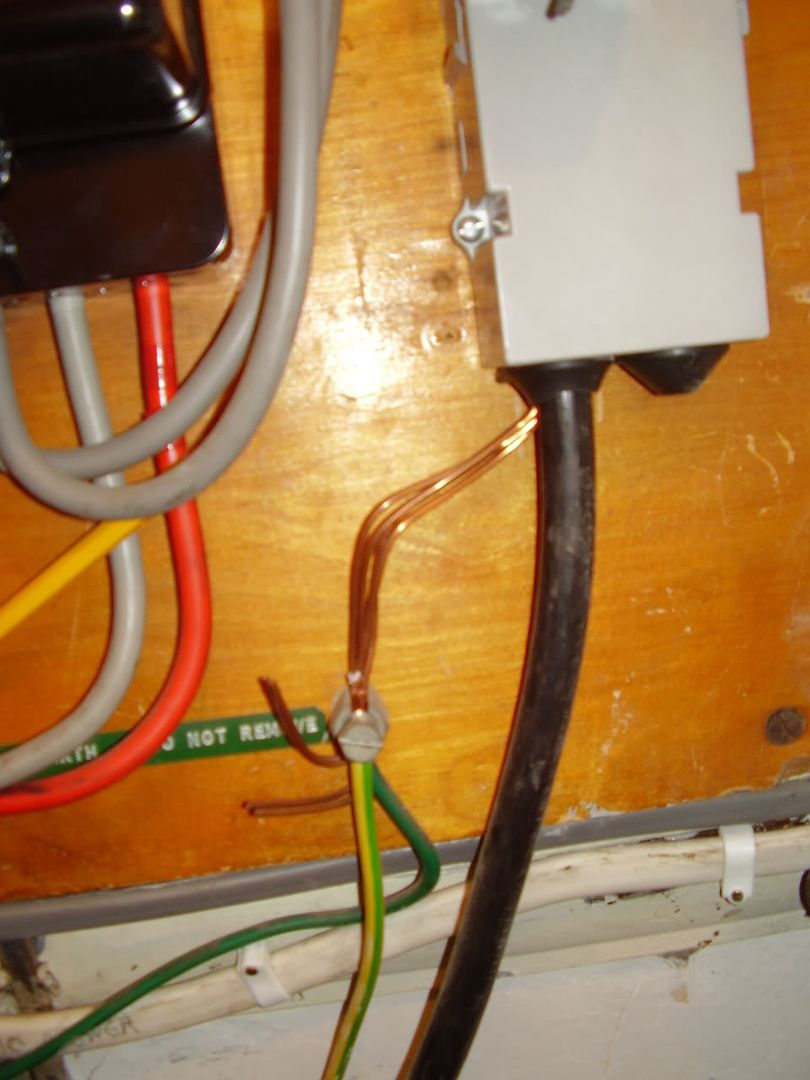Hi
Just about to have our Water Mains changed to plastic (Thames Water renewal of Victorian mains). Their 'help' booklet says they have a team of specialist contractors and a phone number to help decide whether a new Electical Earth is needed when the plastic pipes are fitted - absolutely useless trying to get any help from them - they say to call an electrician - some help.
Anyway - all I want to know up front is whether it is necessary to call an electrician.
We had a new supply fitted from the street to the main fuse in 1989 when some builders digging the foundation of our off-street parking sliced though the old cable. This new (black) cable is about as thick as my thumb and is a sheathed armoured cable (I guess). It goes into the main fuse at the bottom and the tails then come out of the top and to the meter etc.
Also coming out of the bottom of the main fuse is some thick bare copper wires that go to an earthing stud on the wooden mounting board. From this stud other green/yellow cable go down under the floor and are clamped to the water mains in pipe. I can't tell from that whether the earth is supplied from the water main pipe or the electicity supply.
Can someone tell me whether the supply cable IS supplying earth also? and the water pipe then providing the earth strapping?
Where does an electicity company's earth get supplied from nowadays?
Thanks.
Just about to have our Water Mains changed to plastic (Thames Water renewal of Victorian mains). Their 'help' booklet says they have a team of specialist contractors and a phone number to help decide whether a new Electical Earth is needed when the plastic pipes are fitted - absolutely useless trying to get any help from them - they say to call an electrician - some help.
Anyway - all I want to know up front is whether it is necessary to call an electrician.
We had a new supply fitted from the street to the main fuse in 1989 when some builders digging the foundation of our off-street parking sliced though the old cable. This new (black) cable is about as thick as my thumb and is a sheathed armoured cable (I guess). It goes into the main fuse at the bottom and the tails then come out of the top and to the meter etc.
Also coming out of the bottom of the main fuse is some thick bare copper wires that go to an earthing stud on the wooden mounting board. From this stud other green/yellow cable go down under the floor and are clamped to the water mains in pipe. I can't tell from that whether the earth is supplied from the water main pipe or the electicity supply.
Can someone tell me whether the supply cable IS supplying earth also? and the water pipe then providing the earth strapping?
Where does an electicity company's earth get supplied from nowadays?
Thanks.



